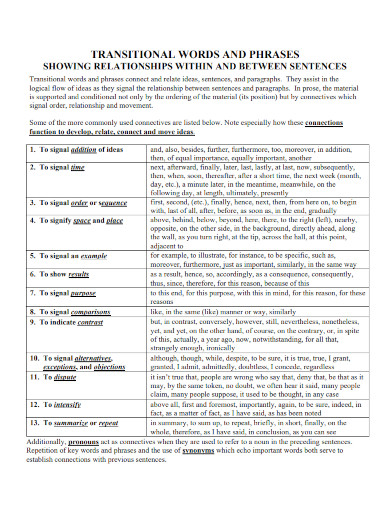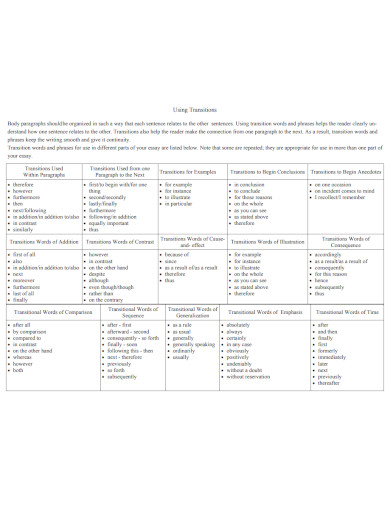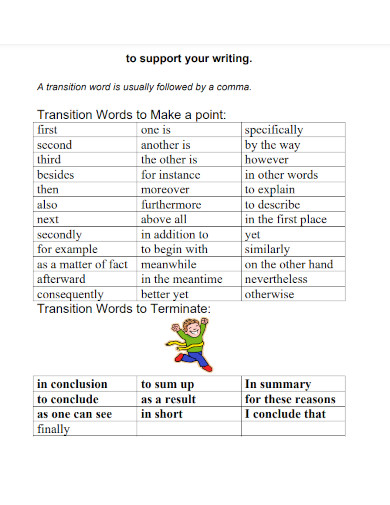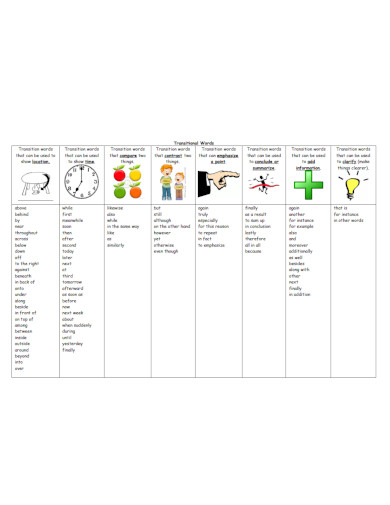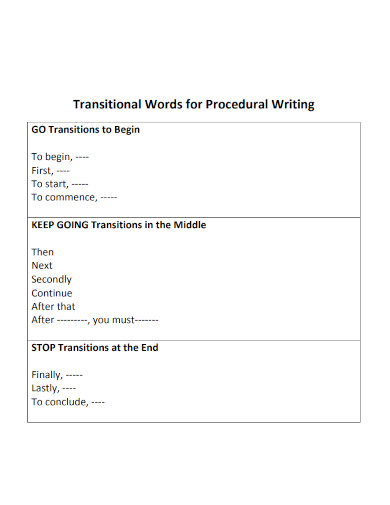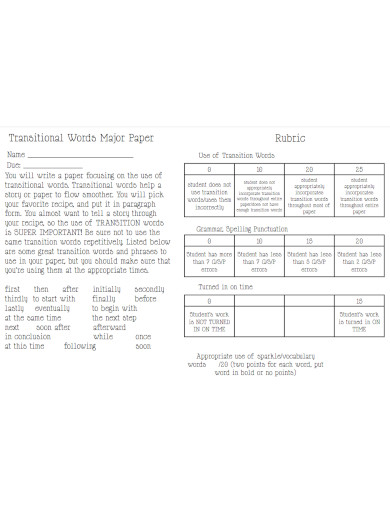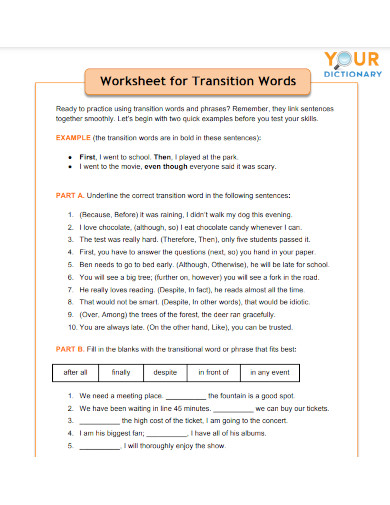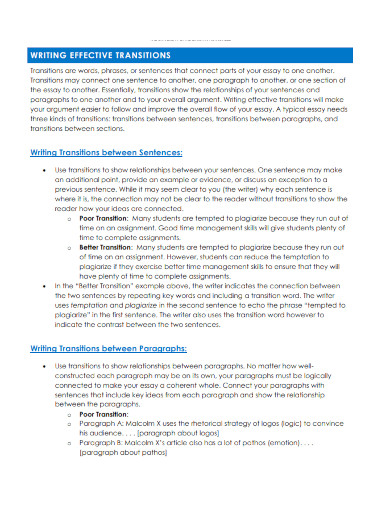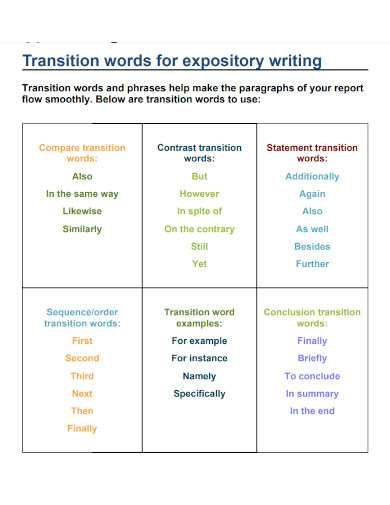10+ Transition Words Examples to Download
In our modern-day linguistics, we tend to communicate our complex thoughts and ideas to one another to be better understood by our peers. One of the reasons why we can effectively and effortlessly communicate more complex ideas through speaking or writing is the existence of transition words.
1. Transition Words and Phrases
2. Argument and Expository Transition Words
3. Using Transition Words & Phrases
4. Transition Words to Make a point
5. Transitional Words Chart
6. Transitional Words for Procedural Writing
7. Writing Transitional Words and Phrases
8. Transitional Words Major Paper Rubric
9. Worksheet for Transition Words
10. Writing Effective Transitions Words
11. Expository Transition Words
What Are Transition Words?
<
How to Use Transition Words
You should not freely or liberally use transition words in one’s sentence or statement, as they all have a specific purpose. Improper usage of transition words will confuse and muddle the reader or listener’s overall understanding of the idea of the statement or sentence. Therefore it is important to understand how to use and write transition words, transition verbs, and even transition sentences.
Step 1: Obtain a List of Transition Words
Begin by obtaining or searching for a list of transition words. This will allow you to have a concise reference list that will help you easily use said transition words in your statement. Some transition words can act as common nouns, proper nouns, singular nouns, and plural nouns.
Step 2: Understand the Different Types of Transition Words
There are many different types of transition words one will encounter in everyday life. Therefore, you must understand the usage and function of each type of transition word. Doing this will help you easily incorporate and use transition words in your everyday diction and writing.
Step 3: Outline a Sentence or Statement
If you are planning on using transition words in your writing you need to create an outline or outline format for the formation of your sentence or statement will turn out. This outline will not only provide you with a structure, but the outline will also allow you to know what type of transition word you will use in your sentence or statement.
Step 4: Properly Insert the Transition Words Into the Sentence or Statement
After you have outlined the sentence or statement, be sure to properly and strategically place the transition word into the statement. This means that the usage of the transition word should make logical sense.
Step 5: Avoid Unused Transition Words
There are older transition words that we do not use anymore, which will confuse the reader if the transition word is used in the wrong context or theme. This means you should avoid using unused or archaic transition words in your sentence or statement, as this will confuse the reader or listener which might lead to misunderstanding or misinterpretation.
FAQs
What are common examples of transition words?
There are many transition words we use and incorporate into our daily conversations, dialogues, and writing. For example, we often use the words and, or, and additionally to connect and transition between two independent clauses or ideas. Another way we commonly use transition words in our everyday lives is to indicate a cause-and-effect relationship between two concepts, context, themes, events, etc. Lastly, we use transition words as ways to indicate the sequence of events, statements, etc. that people can easily identify and discern.
What are the different types of transition words?
There are four different types of transition words each with its specific function, form, and usage. The first type of transition words are the additive transition words, which try to add and connect, reference, compare, and clarify two or more ideas, concepts, and thoughts. The second type of transition word is called the adversative transition word, which will act as a juxtaposition. The third type of transition word is called the causal transition word, which establishes and creates a cause-and-effect sequence by explaining the purpose, cause, and consequences of two or more ideas, actions, events, and entities. Examples of causal transition words include because, since, thus, therefore, to, so, and otherwise. The final type of transition word is called the sequential transitional word, which tries to sequence the order of events or actions through the use of enumeration.
What is the importance of transition words?
Communication, written or spoken, has a lot of nuances that the reader or listener will need to observe to understand the intention and idea of the writer or speaker. Unlike writing, speaking has a lot more nuances and signals the listener can use to interpret the meaning or intention of the speaker. These nuances and signals are body language, eye contact, facial expressions, and tone of voice. In conclusion, transition words are important due to their ability to signal readers and listeners to various nuances and to facilitate the creation of more complex ideas and statements that would otherwise be harder to create and comprehend.
Transition words are specific words and phrases that act as connectors, which will try and establish a relationship and link between two or more ideas, thoughts, concepts, events, and acts. Not only do these words link two or more ideas together, but transitional words also allow the person to create a new sentence that can provide a complex thought, tone, or idea. Therefore it is very important to understand and know how to properly use and place transitional words in one’s writing or speaking.



